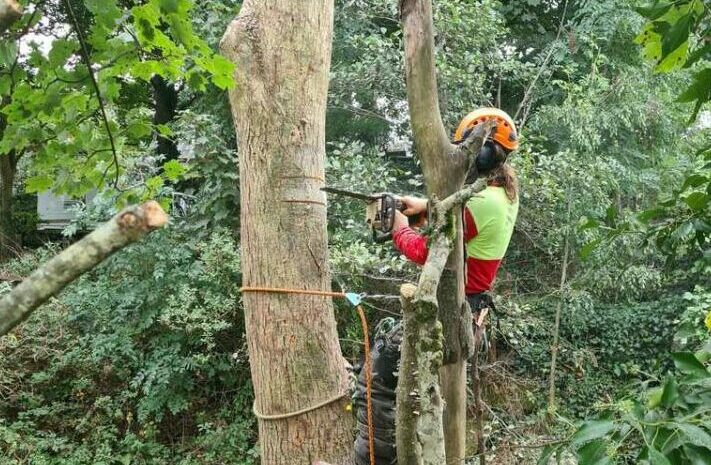
Image Source: Google
The best Beechwood trees are known for their majestic beauty and unique bark texture, making them a popular choice for landscaping. However, like any other tree, they require proper care and maintenance to thrive. In this guide, tree service professionals share their expert tips on how to care for your beechwood trees to ensure they stay healthy and vibrant for years to come.
Understanding Beechwood Trees
Types of Beechwood Trees
- American beech (Fagus grandifolia): Native to North America, known for its smooth, silver-gray bark.
- European beech (Fagus sylvatica): Originating from Europe, featuring a more columnar growth habit and darker bark.
Characteristics of Beechwood Trees
- Leaves: Beech trees have oval-shaped leaves with a pointed tip and serrated edges.
- Bark: The bark of beechwood trees is smooth and gray, developing unique ridges as the tree ages.
- Growth Habit: Beech trees have a dense, spreading canopy that provides ample shade.
Expert Tips for Caring for Beechwood Trees
Planting
- Choose a location with well-draining soil and full to partial sun exposure for optimal growth.
- Plant young beech trees in the spring to allow them to establish their root system before the hot summer months.
- Provide ample space for the tree to grow, as beechwood trees have a wide-spreading root system.
Watering
- Water newly planted beech trees regularly to keep the soil moist but not waterlogged.
- Established beechwood trees typically do not require frequent watering unless experiencing drought conditions.
- Avoid overwatering, as it can lead to root rot and other fungal diseases.
Pruning
- Prune beech trees in late winter or early spring while they are still dormant to promote healthy growth.
- Remove dead or diseased branches to improve the overall health and appearance of the tree.
- Avoid heavy pruning, as beechwood trees are susceptible to sunscald and damage from excessive cutting.
Fertilizing
- Apply a balanced fertilizer in early spring to provide essential nutrients for the tree's growth.
- Avoid over-fertilizing, as it can cause nutrient imbalances and harm the tree's roots.
- Consider soil testing to determine the specific nutrient needs of your beechwood tree.
Common Issues with Beechwood Trees
Pests
- Aphids: These tiny insects feed on the sap of beech trees, causing leaves to curl and turn yellow.
- Scale Insects: Scale insects can infest beechwood trees, leading to stunted growth and dieback.
- European Beech Scale: This invasive pest can cause extensive damage to European beech trees if left untreated.
Diseases
- Beech Bark Disease: A fungal infection that affects the bark of beech trees, causing cankers and dieback.
- Beech Leaf Disease: A newly emerging disease that weakens the foliage of beech trees, leading to premature leaf drop.
- Root Rot: Excessive moisture in the soil can cause root rot in beechwood trees, leading to wilting and decline.
Conclusion
By following these expert tips for caring for your beechwood trees, you can ensure they remain healthy and vibrant in your landscape. From proper planting techniques to addressing common issues like pests and diseases, proactive tree care is essential for the long-term health of your beech trees. If you encounter any challenges along the way, don't hesitate to seek guidance from tree service professionals to help maintain the beauty and vitality of your beechwood trees.
